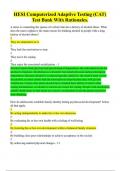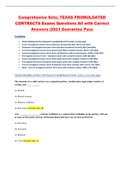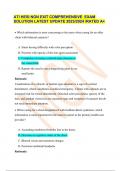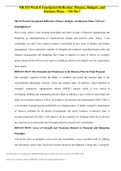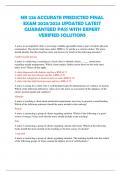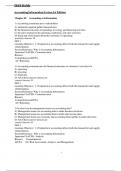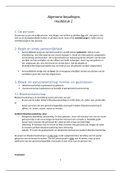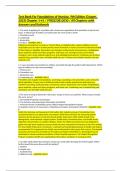Exam (elaborations)
HESI CAT exam Test Bank. All new for 2025!/ HESI Computerized Adaptive Testing (CAT) Test Bank With Rationales.
- Institution
- Brown Mackie College - St. Louis
HESI CAT exam Test Bank. All new for 2025!/ HESI Computerized Adaptive Testing (CAT) Test Bank With Rationales-A nurse is counseling the spouse of a client who has a history of alcohol abuse. What does the nurse explain is the main reason for drinking alcohol in people with a long history of alcoho...
[Show more]
